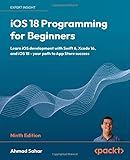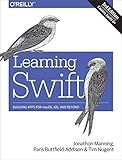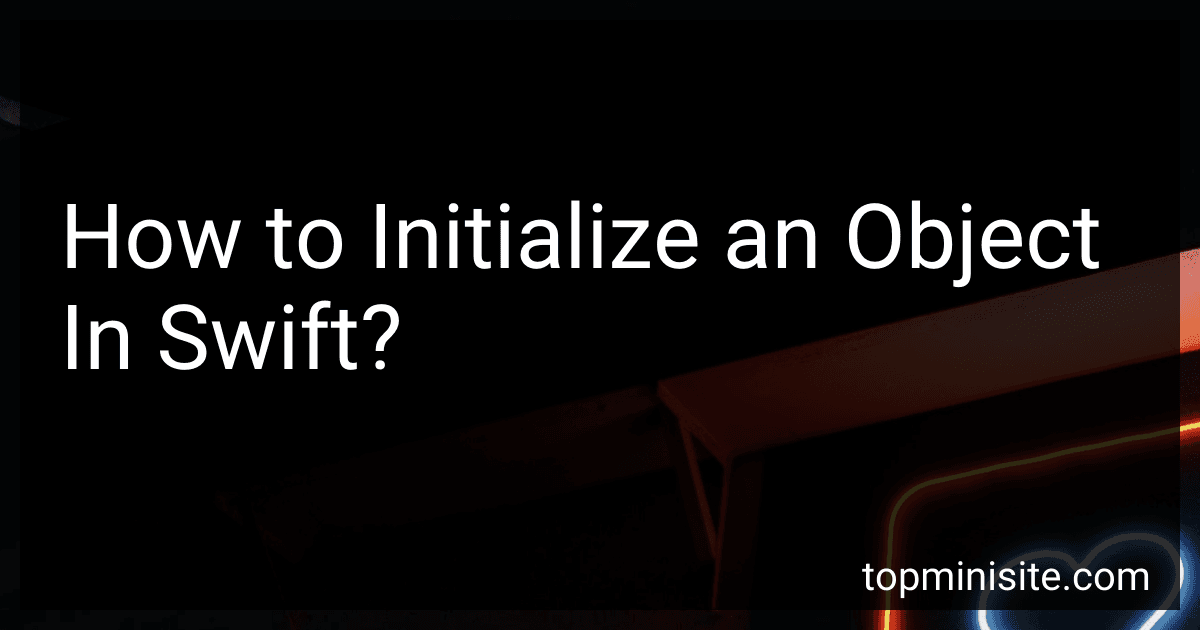Best Swift Programming Books to Buy in January 2026

Mastering Swift 6: Modern programming techniques for high-performance apps in Swift 6.2



iOS 18 Programming for Beginners: Learn iOS development with Swift 6, Xcode 16, and iOS 18 - your path to App Store success



Modern Swift Programming: From Fundamentals to Building Your First Apple Apps



Learning Swift: Building Apps for macOS, iOS, and Beyond



Coding iPhone Apps for Kids: A Playful Introduction to Swift



Mastering iOS 18 Development: Take your iOS development experience to the next level with iOS, Xcode, Swift, and SwiftUI



SwiftUI Cookbook: A guide for building beautiful and interactive SwiftUI apps



Hello Swift!: iOS app programming for kids and other beginners



Swift Programming: A Detailed Guide to Learning Essential Concepts and Mastering Advanced Techniques


In Swift, initializing an object is done using initializers. An initializer is a special method that prepares an instance of a class, structure, or enumeration for use.
There are two types of initializers in Swift: designated initializers and convenience initializers. Designated initializers are the primary initializers for a class and must fully initialize all properties of the class. Convenience initializers are secondary initializers that call the designated initializer of the class.
To initialize an object in Swift, you start by creating a new instance of the class, structure, or enumeration using the appropriate initializer. For example, to initialize an object of a class named Person, you would write let person = Person().
If the class has properties that need to be initialized with specific values, you can pass those values to the initializer. For example, if the Person class has a property name, you can initialize a Person object with a name like this: let person = Person(name: "John").
Keep in mind that some classes may have required properties that must be initialized in the initializer. In this case, the initializer must provide values for those properties.
How to initialize an object with a closure in Swift?
To initialize an object with a closure in Swift, you can define a closure property in the object's class or struct and then provide a closure when creating an instance of the object. Here is an example:
// Define a class with a closure property class MyObject { let myClosure: () -> Void
init(myClosure: @escaping () -> Void) {
self.myClosure = myClosure
}
}
// Create an instance of MyObject with a closure let obj = MyObject { print("Hello from closure!") }
// Call the closure obj.myClosure()
In the above code, we define a class MyObject with a closure property myClosure. We then create an instance of MyObject by providing a closure that prints "Hello from closure!". Finally, we call the closure by accessing the myClosure property of the object.
How to initialize an object with default values in Swift?
In Swift, you can initialize an object with default values by providing default values in the parameter list of the object's initializer. Here's an example:
class Person { var name: String var age: Int
init(name: String = "John Doe", age: Int = 30) {
self.name = name
self.age = age
}
}
let john = Person() print(john.name) // Output: John Doe print(john.age) // Output: 30
let jane = Person(name: "Jane Smith") print(jane.name) // Output: Jane Smith print(jane.age) // Output: 30
let alex = Person(name: "Alex Johnson", age: 25) print(alex.name) // Output: Alex Johnson print(alex.age) // Output: 25
In this example, the Person class has two properties name and age. The initializer for the Person class has default parameter values for name and age, so you can initialize a Person object without providing any arguments, or you can provide some or all of the arguments based on your needs. This allows you to initialize an object with default values in Swift.
How to initialize an object in Swift using the init() method?
To initialize an object in Swift using the init() method, follow these steps:
- Define a class or structure for the object you want to create. For example, let's say we have a Person class:
class Person { var name: String
init(name: String) {
self.name = name
}
}
- In the init() method, specify any parameters that are required to create the object. In this case, we need to provide a name parameter to create a Person object.
- To create an instance of the Person class, simply call the init() method with the required parameters:
let person = Person(name: "Alice")
- The init() method will be called automatically when you create a new instance of the class, and the object will be initialized with the specified parameters. In this example, the person object will have a name property set to "Alice".
That's it! You have successfully initialized an object in Swift using the init() method.
How to initialize an object with protocols in Swift?
To initialize an object with protocols in Swift, you first need to create a class or structure that adopts the protocol. Then, you can simply instantiate an object of that class or structure.
Here's an example:
protocol Vehicle { var numberOfWheels: Int { get } func drive() }
class Car: Vehicle { var numberOfWheels: Int
init(numberOfWheels: Int) {
self.numberOfWheels = numberOfWheels
}
func drive() {
print("The car is driving")
}
}
let myCar = Car(numberOfWheels: 4) myCar.drive()
In this example, we have a Vehicle protocol with a numberOfWheels property and a drive method. We then create a Car class that adopts the Vehicle protocol. When we initialize an object of the Car class, we provide the number of wheels for the car. We can then call the drive method on the myCar object.
What is the syntax for initializing an object in Swift?
To initialize an object in Swift, you can use the following syntax:
let newObj = ClassName()
Where ClassName is the name of the class you want to create an instance of.
